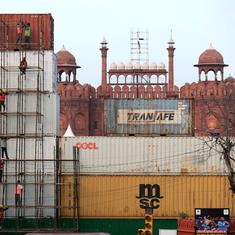The woman was said to have been mentally ill. But what would you call the men who raped her?
The Delhi gangrape case in December 2012 is perhaps the first time most people in India heard about the idea that a woman could not only be violated by the animate body but by inanimate objects – which qualifies as aggravated sexual assault under law and invites a higher punishment.
The new horrors
In a city where rape stories are the staple of crime briefs, to be glanced at and forgotten, one of the reasons the rape and murder of the 23-year-old physiotherapist triggered the concatenation of emotions that blew into a full blown public outpouring was the horror of reading about her slow death from ruptured intestines.
But could the same details that induce public horror also end up encouraging bestiality?
Are rapists getting ideas from each other and indulging in a form of competitive cruelty?
Lawyer and activist Flavia Agnes is worried that could be the case. "Rather than acting as a deterrent, reporting such details can lead to stimulation," she said. Rape needs to be stripped of sensation, particularly in a country where nine of ten reported rapes involve family members and people known to the woman. Stranger rapes are an aberration, and so are aggravated assaults.
It wasn’t the case that aggravated sexual assaults did not occur previously in India, said senior journalist Pamela Philipose. But there wasn't television around then. "It seems newspapers now feel the pressure to write more descriptive copy to match the graphic and sensationalised depiction of rape stories on television," she said.
But the visual voyeurism of cinema and television now stands dwarfed by the real thing: the WhatsApp video.
Leering faces
Last week, Sunita Krishnan, an activist in Hyderabad uploaded two videos on YouTube that showed the faces of young men smiling into the camera as they took turns raping a woman. The videos were being passed around on WhatsApp and Krishnan happened to see them. "Ten seconds into the video, I was overcome. I had to stop as I needed to throw up," she told NDTV. She decided that men had to be outed and shamed. Editing the video to conceal the identity of the women, she posted them on YouTube.
“Offenders make videos and take photos to shame victims and use these to threaten them into silence," she told Indian Express. "I used the same strategy against the offenders while concealing the identity of the victim. I am hoping people will be sensitive enough to give information if they can identify the rapists."
Krishnan, who is a rape survivor herself, might have been acting out of a space of outrage, but shock begets shock, and we could soon reach a point when nothing – not even asbestos in a woman's vagina – shakes us up.










